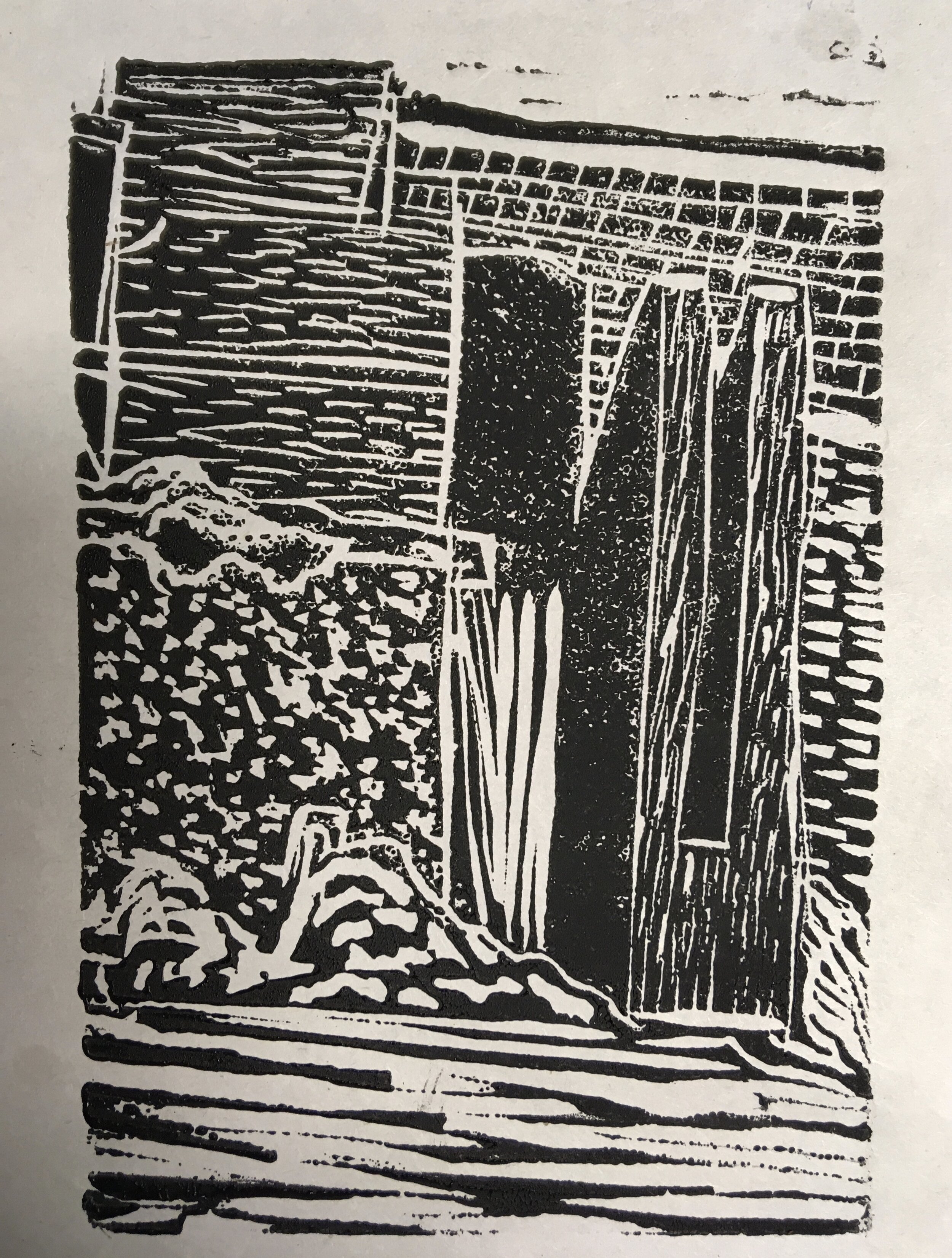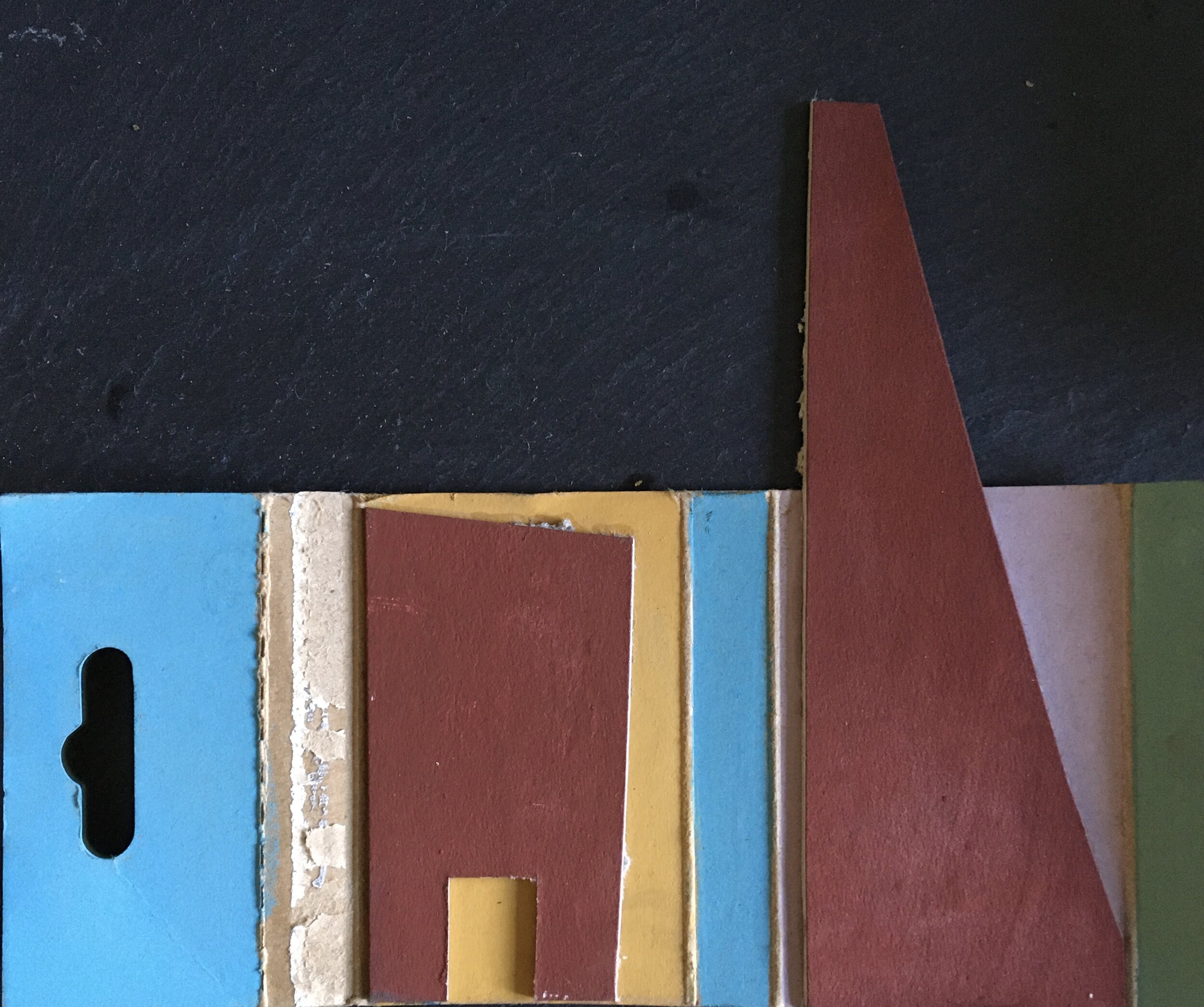A Walk Through My Local History with Lou Blakeway
Observed shapes and colours at Gosty Hill Bridge, Stewarts and Lloyds
Like many people in 2020 artist Lou Blakeway has discovered and uncovered more about her local neighbourhood. For this piece, commissioned by Bostin News Content Editor Heather Wastie, Louise talks us through how lockdown walks inspired her work…
I am an artist and tutor from Old Hill, where I have lived since I was five. Although I only lived a ten-minute walk from the canal, I have visited it perhaps once or twice in childhood during school trips and only within the last five years started walking or running along it regularly.
Although grounded in the traditions of observational art, my work is primarily concerned with form, space, colour and line. I also experiment with materials and processes, making works from the objects I collect during my walks.
The enforced lockdown allowed me time to focus on my own work and to further explore my immediate surroundings, which on first impressions may not seem that interesting.
I began by drawing things in my immediate vicinity – my family, myself, chimneys and abstract shapes I saw in the garden or through the window. I also participate in a weekly life drawing class through Facebook.
I started walking more frequently as the leisure centre was closed. I had noticed, during a previous walk, the remnants of an old factory by the Gosty Hill Tunnel. I had photographed it last autumn as I was intrigued by its shapes and cavernous spaces, its vastness, its dominance, its presence and, in turn, its absence. It was across the canal, out of reach, unexplorable and so it intrigued me even further. And then I forgot all about it…
Until lockdown when I came upon it again one evening, on one of my first lockdown walks. I wanted to know what it was and what had happened to it.
Linocuts based on remnant shapes of former Stewarts & Lloyds site
There is a hand-painted sign fixed to the remains that informed me that this was the site of the former Stewarts and Lloyds Tube Works which was in operation from 1903 until it was nationalised to become part of British Steel in 1968. It closed permanently in 1990 and was then demolished in 1992 to build a business park.
I knew that I wanted to explore the site’s environmental and cultural processes and its histories so I spent time exploring, observing, collecting and documenting. I made drawings and notes, took photographs and collected objects and materials I found on the ground.
Painted collage Cobbs Engine House
I also researched the site’s history: from the purchase of the land in 1860 by Lord Lyttelton to its subsequent demise in 1990 (you can search friendsofcoombeswoodwedge.co.uk and blackcountryhistory.org for further details and images of the site).
During this time, I was also reading a novel called How I Killed Margaret Thatcher by Anthony Cartwright, a writer from Dudley. The story is set in Dudley during Thatcher’s reign and depicts the demise of local industry, unemployment and its knock-on effects to families who lost their homes or resorted to crime to earn a living. This resonated deeply with my own family’s experiences of unemployment in the 1980s due to the closure of the Round Oak Steelworks, although I don’t recall anyone resorting to crime.
I discovered how the company had valued the welfare of its employees through the creation of recreation grounds, thrift clubs, housing and educational schemes and assistance during sickness and old age. There was also an institute at Coombeswood which was used for dining and entertainment. This made me think about and question today’s working practices and whether there are still companies who provide such benefits for their employees. I’m hopeful.
Peartree Lane Bridge
The site directly alongside the canal is now home to a variety of wildlife – birds such as Canada geese, mallards and their chicks, moorhens and coots; herons, butterflies and fish. There is also an abundance of wildflowers – I noted meadow buttercup, groundsel, stinging nettle, water dock, red campion, dog rose, cow parsley, wood forget-me-not and ribwort plantain. I’m always in awe of how quickly nature reclaims sites which were once a source of pollution and noise.
I consider myself very lucky to live where I do. It’s not beautiful in the conventional sense, and there is a problem with poverty and degradation in the area, but there’s so much to see and explore if you only take the time, and the canal is a great place to start due to its industrial heritage and its recreational future.
Lou Blakeway
Instagram: loublakeway





